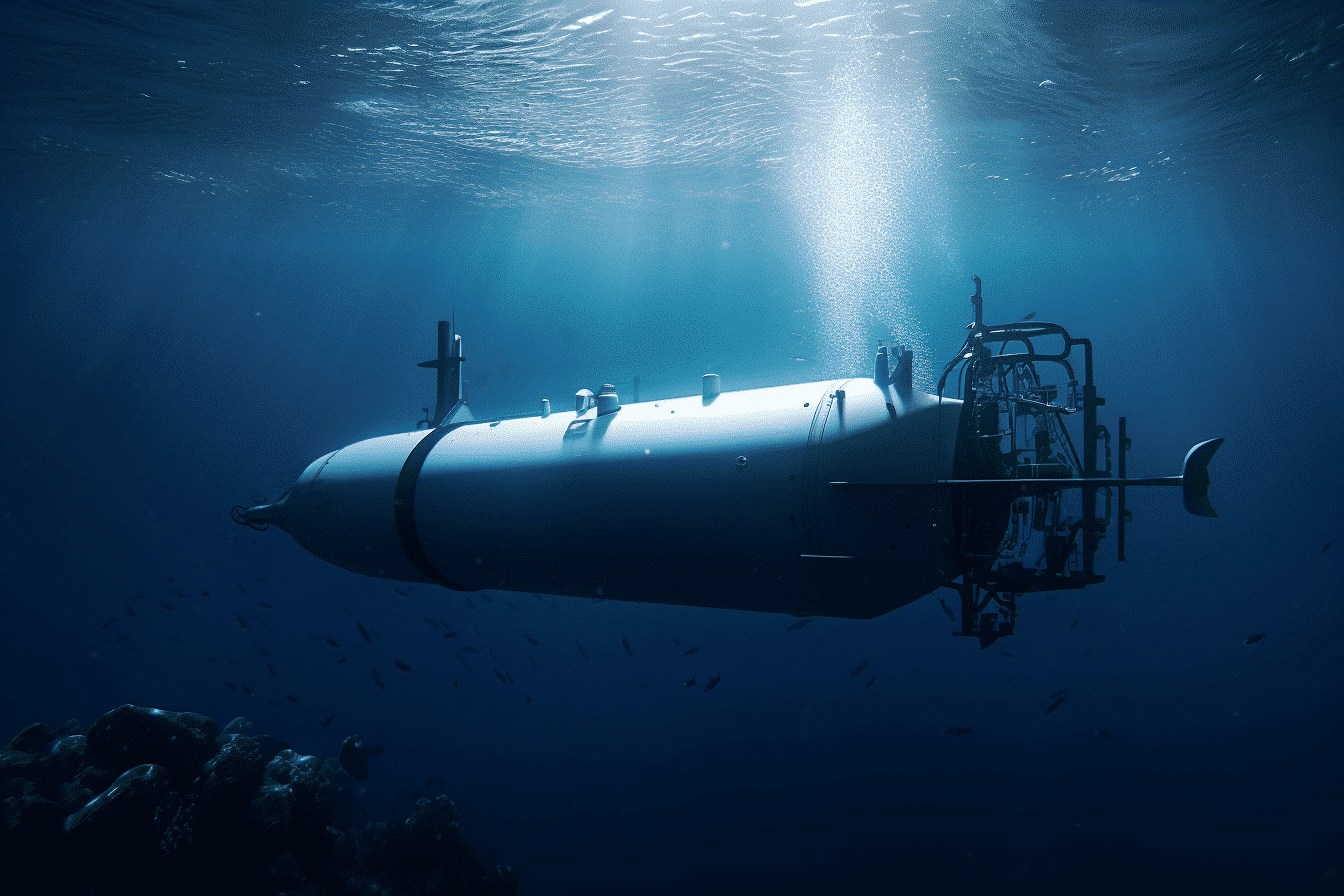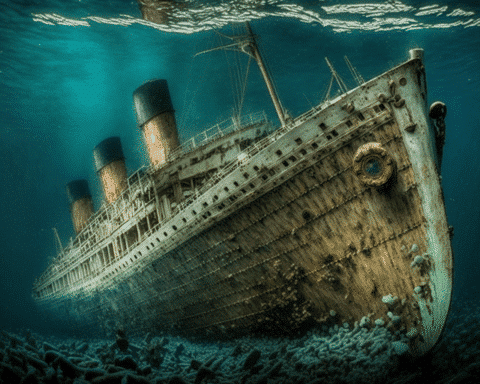The US Coast Guard announced the tragic conclusion of a five-day international search for a deep-sea submarine exploring the Titanic’s century-old wreckage. The vessel was reported to have catastrophically imploded, resulting in the deaths of all five individuals on board.
The debris of the submersible, known as the Titan, was discovered by a robotic dive vehicle launched from a Canadian ship. The wreckage was located approximately 1,600 feet (488 meters) from the Titanic’s bow and 2 1/2 miles (4 km) below the ocean surface in a remote part of the North Atlantic, said US Coast Guard Rear Admiral John Mauger.
OceanGate Expeditions, the US company operating the Titan, reported losing contact with the submersible and its surface support ship on Sunday morning, nearly two hours into the planned dive to the iconic shipwreck.
According to Coast Guard officials, five large fragments from the Titan, including its tail cone and parts of its pressure hull, were identified in the debris field resulting from the vessel’s disintegration. Information about any human remains was not provided.
Rear Admiral Mauger indicated that the wreckage spread was consistent with a significant vehicle implosion.
OceanGate had earlier confirmed the loss of all five men aboard the Titan, including the company’s founder and CEO, Stockton Rush, who was also the vessel’s pilot.
The deceased also included British billionaire and explorer Hamish Harding, 58, British national Shahzada Dawood, 48, a Pakistani-born businessman, and his 19-year-old son, Suleman, as well as French oceanographer and Titanic expert Paul-Henri Nargeolet, 77.
The company expressed grief for the tragic loss, saying, “These men were true explorers who shared a distinct spirit of adventure and a deep passion for exploring and protecting the world’s oceans. Our hearts are with these five souls and every member of their families during this tragic time.”
Teams from the US, Canada, France, and Britain had spent days searching an extensive open sea area for any signs of the Titan.
While the timing of the Titan’s ill-fated end is not yet precise, the location of the wreckage and the timing of the last communication suggests a failure near the end of its Sunday descent. The US Navy confirmed detecting acoustic anomalies consistent with an implosion or explosion near the time the sub’s communications were lost.
James Cameron, the acclaimed director of the blockbuster “Titanic” and a past visitor to the wreck, shared his grief at the news, understanding the acoustic data to signal the Titan’s loss and its occupants’ loss.
Admiral Mauger said robotic vehicles would continue to gather evidence on the seabed, but recovering the victims’ remains may be impossible due to the extreme conditions at such depths.
The tragic end of the Titan drew global attention, especially given the longstanding fascination with the Titanic. OceanGate’s undersea expeditions to the Titanic wreck, offered since 2021 for $250,000 per person, have stirred both enthusiasm and safety concerns in the past.
The intensive search covered over 10,000 square miles of ocean. Deep-sea robot vehicles were deployed to extend the investigation into the ocean’s extreme depths, where immense pressure and darkness added further challenges to the mission.
The sinking of the RMS Titanic on its maiden voyage in 1912 continues to captivate imaginations more than a century later. As the Titan’s tragic end underscores, exploring these deep-sea wrecks remains a risky endeavour that can prove fatal despite modern technology. This recent disaster reminds us of the inherent dangers of deep-sea exploration and poses questions about such expeditions’ ethics and safety precautions. As the world mourns the explorers lost in this tragedy, their shared passion for understanding and preserving the world’s oceans lives on.



